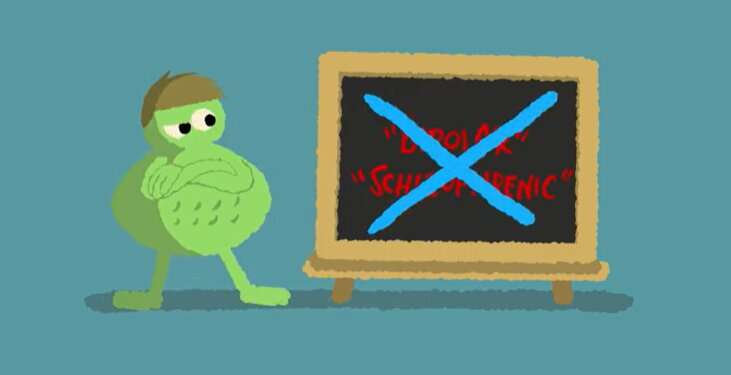This article has been reviewed according to Science X's editorial process and policies. Editors have highlighted the following attributes while ensuring the content's credibility:
fact-checked
trusted source
proofread
Taking the stigma out of mental health reporting

Mental health stigma refers to the negative attitudes, beliefs and misconceptions that society holds about people with mental illness. Despite considerable advances in awareness and understanding, mental health stigma is still pervasive in Australia.
For people living with mental ill health, and often their families and caregivers, stigma means regularly facing negative attitudes about who they are.
It can result in discrimination when it comes to employment, housing and education, driving social exclusion and perpetuating harmful misconceptions about mental illness.
Stigma also contributes to a culture of silence and shame, leading many to internalize negative beliefs about themselves—which can limit help-seeking and impact ongoing recovery and quality of life.
Put simply, mental health stigma can be a significant cause of harm. In fact, those with lived experience of mental ill health say living surrounded by stigma can be harder than dealing with the condition itself.
Cameron Solnordal, SANE Director and Peer Ambassador describes stigma as a weapon: "When I was given my diagnosis, it was stigma that told me I was never going to have a home, have a job, have a family, have a life. It took me 15 years to realize that was all completely wrong.
"Stigma is a weapon that keeps people apart, and I don't want to be apart anymore."
Stigma and the media
Mass media is a major driver of public stigma, as was emphasized in the Australian Government's recent draft National Stigma and Discrimination Reduction Strategy.
The evidence shows that media portrayal of negative stereotypes encourages and reinforces stigmatizing community attitudes.
Conversely, positive media stories of recovery have been shown to be powerfully destigmatizing.
The global 2022 Lancet Commission on ending stigma and discrimination in mental health found that the use of media-based interventions for addressing public stigma is not yet widespread and there is a need to gain a greater understanding of the role of these interventions in stigma reduction activities.
What is the real-world impact of media interventions?
SANE StigmaWatch was established in 1997 as one of the first programs in the world to support positive media representation of mental illness. In partnership with more than 5,000 community "StigmaWatchers" around the country, StigmaWatch monitors media outputs against the best-practice media guidelines produced by Mindframe, an Everymind program. Where necessary, they will contact journalists and media outlets to suggest modifications.
SANE also encourages positive media output by connecting media professionals with lived experience representatives.
In 2021, we undertook research to better understand problems in Australian media portrayals of mental illness and suicide and how StigmaWatch is influencing these portrayals. We analyzed StigmaWatch activity between 2017 and 2021, reviewing more than 1,300 reports from stigmatizing media news content in online, TV, print, radio and social media.
Our results showed that the StigmaWatch process works.
Almost half (44.3%) of the media coverage that was identified as problematic by StigmaWatch was amended to be less harmful following contact with more than 450 journalists.
What still needs to change?
Our analysis also uncovered trends in the types of issues and problematic media content reported to StigmaWatch.
Most of the breaches were related to media portrayals of suicide.
These are critical to address because there's considerable evidence to show inclusion of suicide methods or locations can result in copycat behavior, and that omitting these details can prevent suicide deaths.
The use of sensationalist or inappropriate language was also common. Terms like "deranged," "psycho" or "topped themselves" contributes to stigma by reinforcing inaccurate and harmful stereotypes.
Removing these is a simple way of reducing harm without impacting the purpose of a media article.
Our analysis also showed that stigmatizing portrayals of people with schizophrenia were particularly common, especially making a causal linkage of schizophrenia to crime. The research evidence shows the vast majority of crime that occurs in the general population is not attributable to mental illness and that people with mental illness are more likely to be victims of crime than perpetrators.
Our research shows that efforts by StigmaWatch to address media-based stigma are influencing positive change in how the Australian media portray mental illness and suicide.
Reducing stigmatizing content is improving the accuracy and quality of media portrayals of suicide and mental illness. This reduces public exposure to misperceptions and inaccurate stereotypes that contribute to harmful stigmatizing attitudes towards people with mental illness.
StigmaWatch is playing a critical role in addressing suicide risk and improving the quality of life for those with significant mental illness.
Working together with the media, we can break down outdated stereotypes and create a world that is safe, inclusive and fair for people living with mental illness.





















